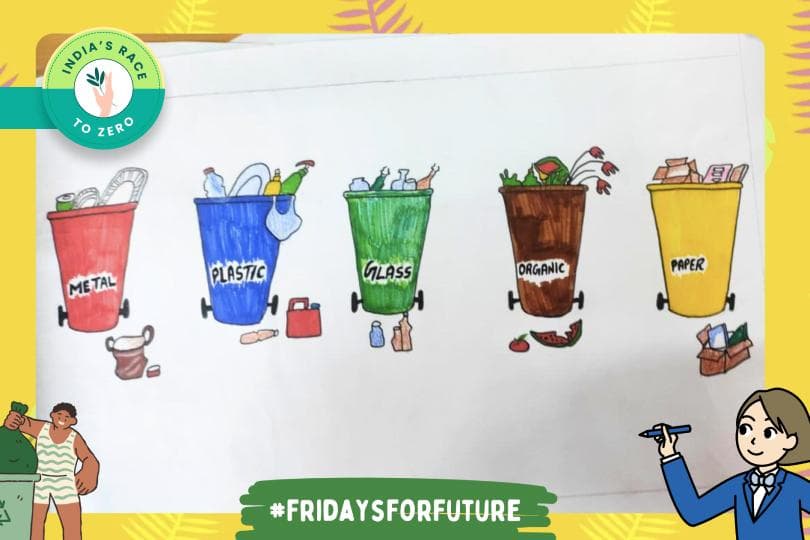Value of Waste Segregation
How I Taught My Family the Importance of Waste Segregation!
Arisha Singh

Hi, I'm Arisha, and I want to share my story of how I started segregating waste in my household and taught my parents about it. It all began one day at school when our teacher, Shefali Ma'am, showed us a video about the importance of waste segregation. That video changed my life.
In the video, I saw how much waste ends up in landfills and how it affects our environment. It made me sad to see animals suffering and our beautiful Earth getting polluted. Shefali Ma'am explained that segregating waste into different categories like biodegradable, non-biodegradable, and recyclable can help reduce this problem. I felt a strong urge to do something about it, starting with my own home.
When I got home that day, I looked at the waste bin in our kitchen. It was full of all sorts of trash—food scraps, plastic wrappers, paper, and more, all mixed together. I knew this had to change. I decided to talk to my parents about what I had learned. During dinner, I said, "Mom, Dad, did you know that we can help the environment by segregating our waste?"
My parents looked a bit puzzled but were willing to listen. I explained how separating our waste could reduce pollution and make recycling easier. They were impressed by what I had learned and agreed to give it a try.
The next day, we went shopping for different coloured bins. We bought three bins: green for biodegradable waste, blue for recyclable waste, and black for non-biodegradable waste. I made labels for each bin and drew pictures to show what should go in each one. For example, the green bin had pictures of vegetable peels, fruit scraps, and leftover food. The blue bin had pictures of plastic bottles, cans, and paper, while the black bin had pictures of things like old batteries and broken toys.
The next challenge was teaching my family how to use the new system. My younger brother, Rudra, was very curious and wanted to help. We turned it into a game. Every time he threw something in the right bin, he earned a star on our family chart. My parents were a bit more hesitant at first, especially when it came to remembering which bin to use. So, I made a simple chart and stuck it on the fridge for easy reference.
It took some time for everyone to get used to the new system, but with a little patience and lots of reminders, it became a habit. I felt proud every time I saw our waste neatly sorted. We even started composting our kitchen waste. Mom and I created a small compost pit in our garden. We would put all our vegetable peels, fruit scraps, and garden waste into the pit, and after a few weeks, we had rich compost to use in our garden. It was amazing to see how our waste could turn into something useful.
Soon, our neighbours noticed what we were doing. Priya Aunty from next door asked me about our bins one day. I was so excited to share my knowledge with her. She thought it was a fantastic idea and decided to start segregating waste in her own home. Before long, more families in our building started doing the same. It felt great to see how one small change in our household was making a difference in our community.
As we continued our waste segregation journey, I learned more about how it helps the environment. By reducing the amount of waste that goes to landfills, we are helping to reduce greenhouse gases that contribute to global warming. Recycling helps conserve resources and reduces the need for new materials. Composting enriches the soil and reduces the need for chemical fertilisers.
I dream of a world where everyone segregates their waste and takes care of the environment. If someone like me can start this change at home, imagine what we can achieve if everyone joins in! I hope my story inspires others to start segregating their waste and teaching their families about it. Together, we can make our planet cleaner and greener for future generations.
